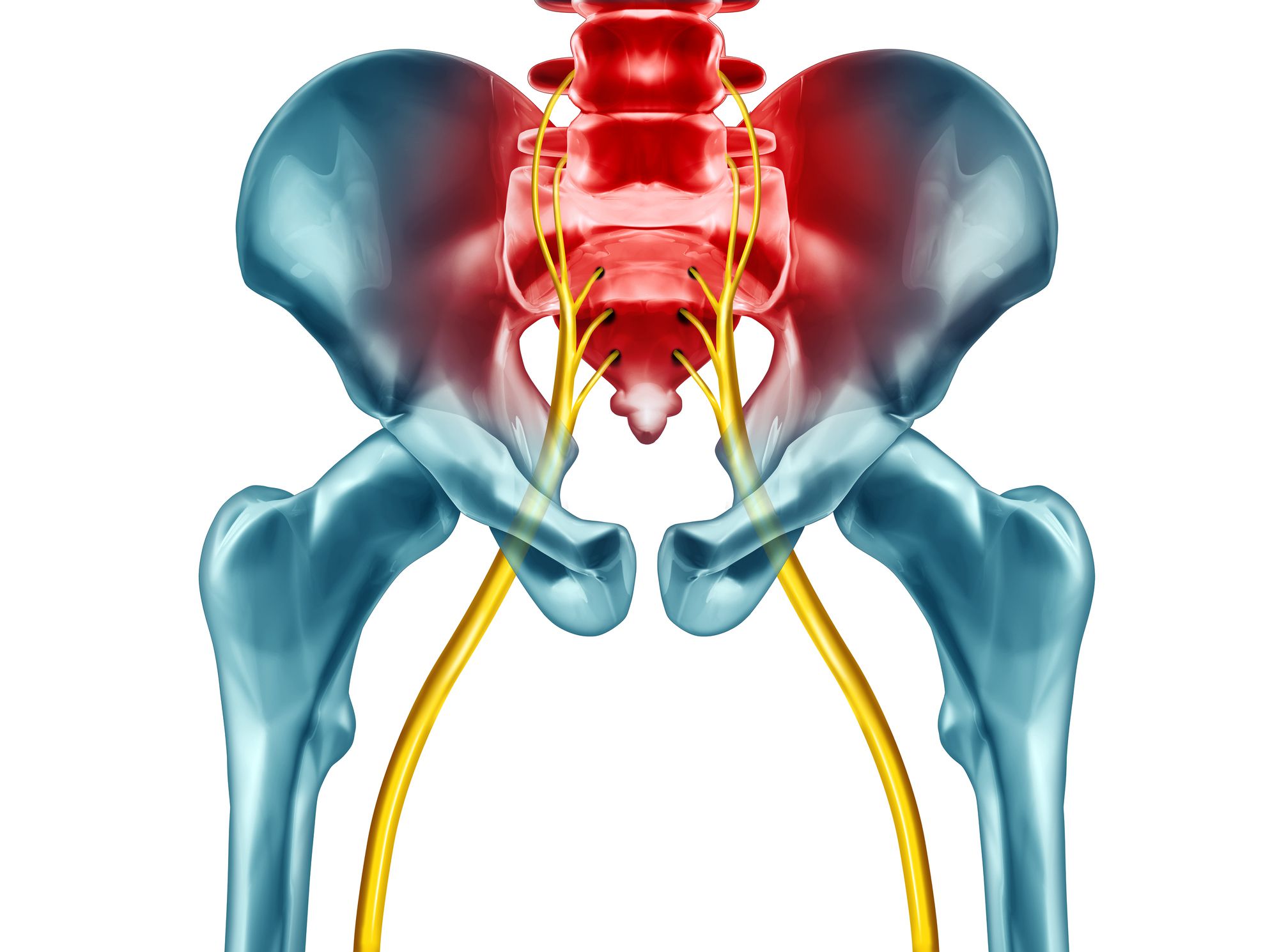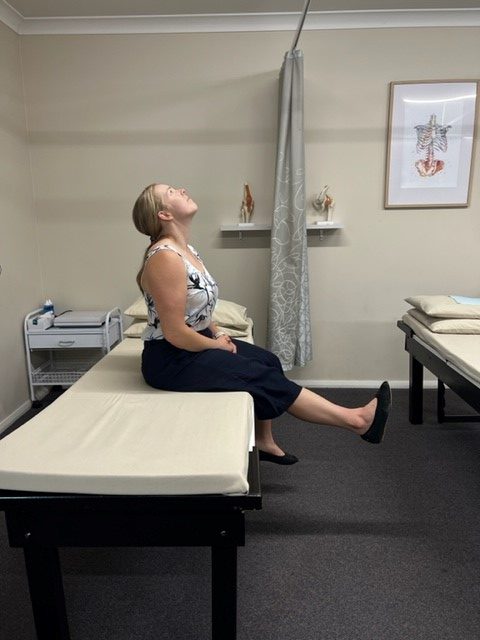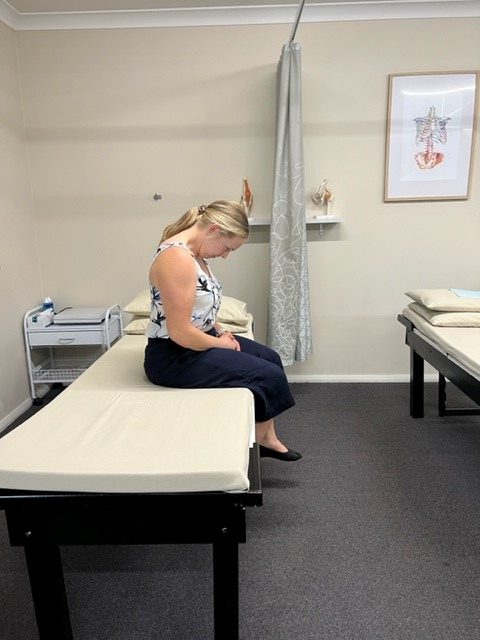Pain in the back? Pain radiating down the leg? Can’t bear the thought of having to sit in the car? If you answered yes to any of these questions there is a good chance you are suffering from sciatic nerve pain. Sciatic nerve pain is also commonly referred to as sciatica.

What is Sciatica?
Sciatica affects one of the main nerves that supplies the leg called the sciatic nerve. Sciatica is caused by compression of the lower lumbar and upper sacral nerve roots that supply the sciatic nerve. It can also be caused by compression/entrapment of the nerve anywhere along its path. We actually have 2 sciatic nerves, one that supplies the Left leg and one that supplies the Right leg. The sciatic nerve is made up of a number of nerve roots which come out of each level of the lumbar spine. These nerve roots join to form one common nerve around the gluteal (buttocks) region called the sciatic nerve. As you start to move further down the leg the sciatic nerve branches out to supply different parts of the leg. Whilst the nerve is called the sciatic nerve, the term sciatica or sciatic pain is reserved for use when there is pathology of the nerve.

What kind of symptoms would I be experiencing if I have sciatica?
Below is a list of the most common symptoms we see when people have sciatic nerve pain;
- Unilateral (one sided) leg pain that is usually more severe than any concurrent lower back pain
- Pain localised to the posterior thigh ie buttocks, hamstring and calf region
- Possibly pins/needles and numbness affecting the limb but not always
- Pain typically aggravated by sitting
- Positive Slump Test – click on the link below to try out this quick test that you can try on yourself!
Help I think I have sciatica, what can I do about it?
If you have any of the aforementioned symptoms and a positive slump test there is a high probability your are suffering from sciatica. First and foremost you SHOULD see a physiotherapist to get a formal diagnosis and management plan. But who am I kidding if you have got this far you are probably looking for some self management options to try first! Don’t worry we’ve got you!
- Avoid sitting
Sitting for prolonged periods can be one of the main aggravating factors for your sciatic nerve pain. Try and avoid long car trips and where possible get up from your desk every 15-20 minutes. Even better, try a standing desk to alleviate some of the pressure.
- Gentle Exercise
Gentle exercises can be one of the best forms of treatment! Try going for a short walk and see if that eases your symptoms. You should find the pain gets better not worse as you are walking. If your pain is increasing stop and speak to your healthcare provider.

- Self Release Work
If you find your glute is feeling really tight and sore you can try putting a massage ball between your glute and the wall and rolling around on it. This can help to alleviate some of the pressure on the nerve and thus provide some short term pain relief.
- More Specific Exercises
There are a couple of physiotherapy exercises you can try to self manage your sciatic pain. These should not cause a worsening of pain whilst you are doing them or after. Remember these exercises are based off general advice and you should seek the opinion of a health care professional as to whether they are right for you.
Knee rocks
- Lie on your back with your knees bent up and the feet flat on the bed
- Keeping the knees together gently rock from side to side
Kick Your Head off Nerve Slider
- Start by sitting on the edge of a bed or chair
- As you straighten the affected leg forwards tilt your head back simultaneously (Image 1)
- Once you have reached the end of the movement or onset of pain bring the leg back down and under the bed/chair and place the chin on the chest (Image 2)
- This should be an oscillating, gentle movement back and forth, you should not hold at the end as you would in a stretch


When should I be concerned?
We know that all pain can be concerning for you however there are some things that you should look out for that may signal a worsening of your condition. These may include;
- Saddle anaesthesia – pins/needles or numbness in the area on the inside of your thighs/crotch
- Gross loss of motor power in one or both legs
- Gross loss of sensation in one or both legs
- Changes to your bladder or bowel function
- Severe un-relenting pain that is not able to be eased by altering position
If you experience any of the above symptoms you should call the ambulance or attend an emergency department for further treatment.
What will you do if I come to the physio?
Every consultation always starts with understanding you! This includes your history, pain, hobbies, work, things you want to get back to etc. This initial discussion can tell us alot about why the pain may have started, things that make it better or worse and how it is affecting your life. From there we will perform a physical assessment which may include looking at your movement, feeling for any tightness/soreness and performing some special tests that aid in providing an accurate diagnosis.
Once we have a diagnosis for you (assuming it is sciatic pain) we will offer you treatments that are customised to you. This may include one or several of manual therapy, dry needling, interferential, traction, exercises, advice and education. Think about it like a mechanic with a toolbox, the mechanic has a number of tools in the box to fix something but they choose the one that is best for the job in front of them. This is the same as physio’s! Once we have provided the selected treatment we will make sure you are setup with a home program that we will instruct you to complete regularly.
How long will it take for my sciatic pain to go away?
Sciatic pain will usually take somewhere between 6-8 weeks to be resolved with physiotherapy management. There are some outliers to this number with some people taking less time and others taking more time to resolve. The majority of cases of sciatic pain that we see resolve uneventfully without the need for further intervention. If someone is experiencing a worsening of their sciatic pain or progressive neurological symptoms we may refer you onto a neurosurgeon. You can take comfort in that over 90% of our patients achieve a full resolution of there issue with conservative physiotherapy management alone.
If you have any questions regarding sciatic pain or have been putting up with this condition get in touch with our team today. There is lots of things we can do to help you and get you living life pain free. Call our Kellyville clinic (9672 6752) or Carlingford (9871 2022) to make an appointment today.

